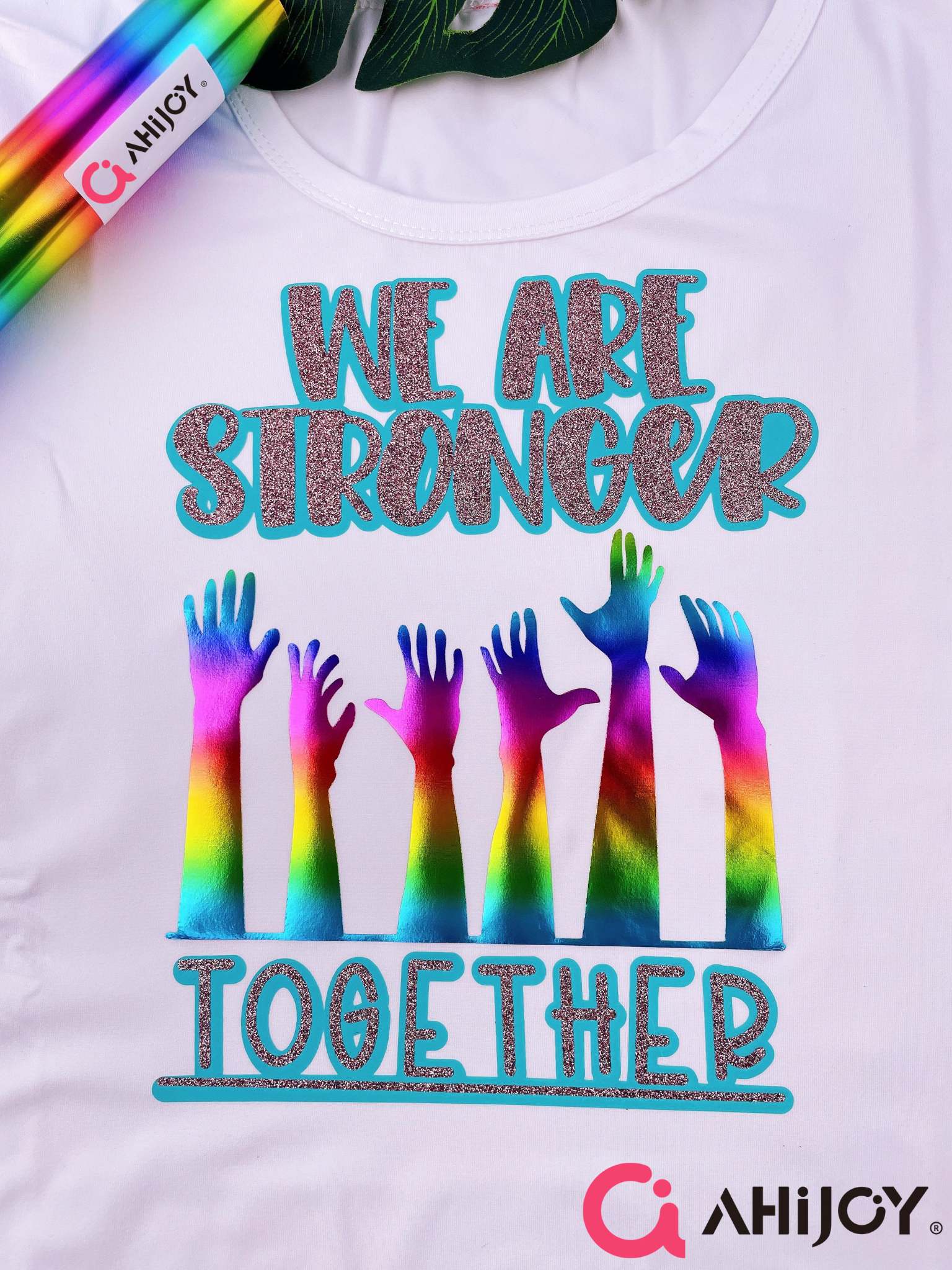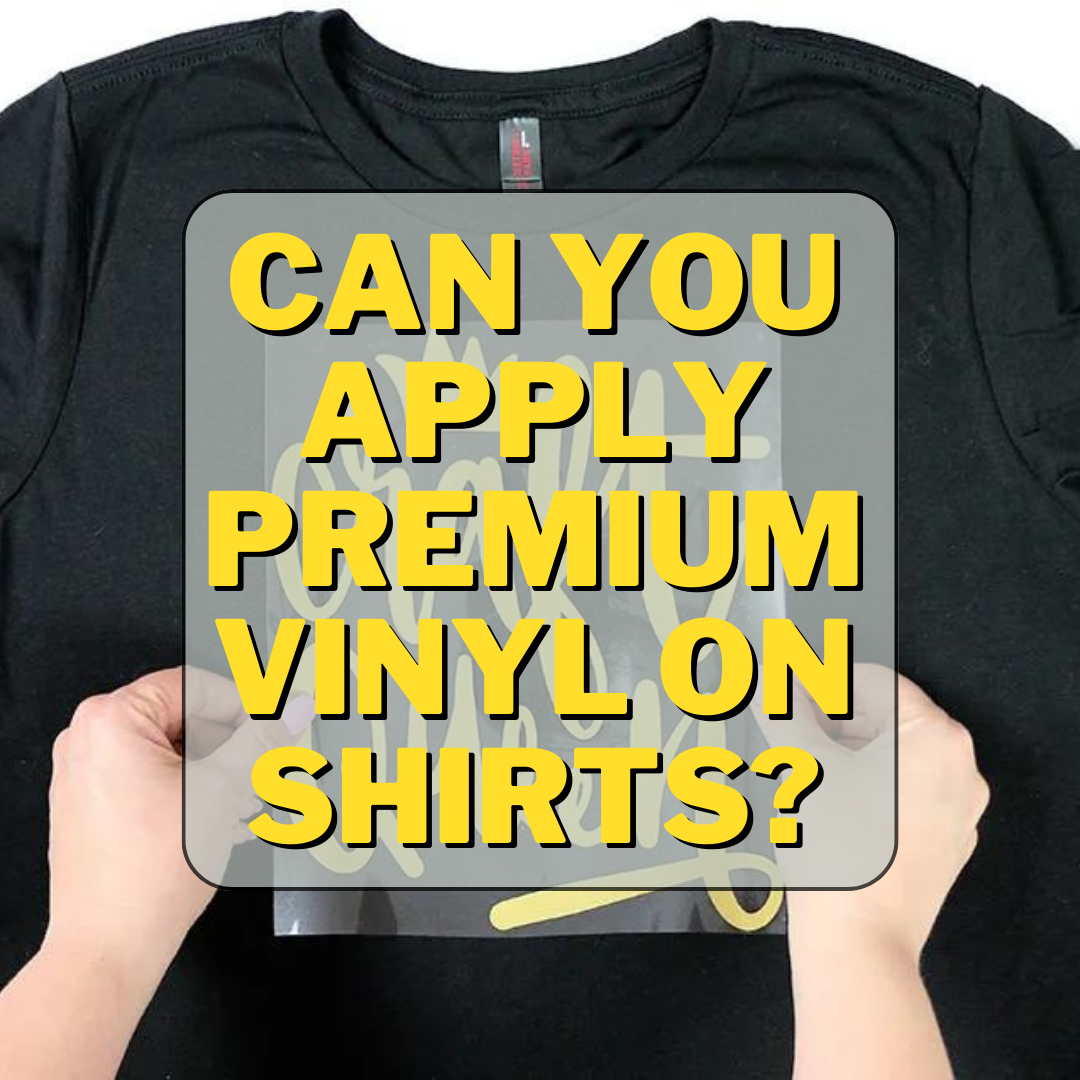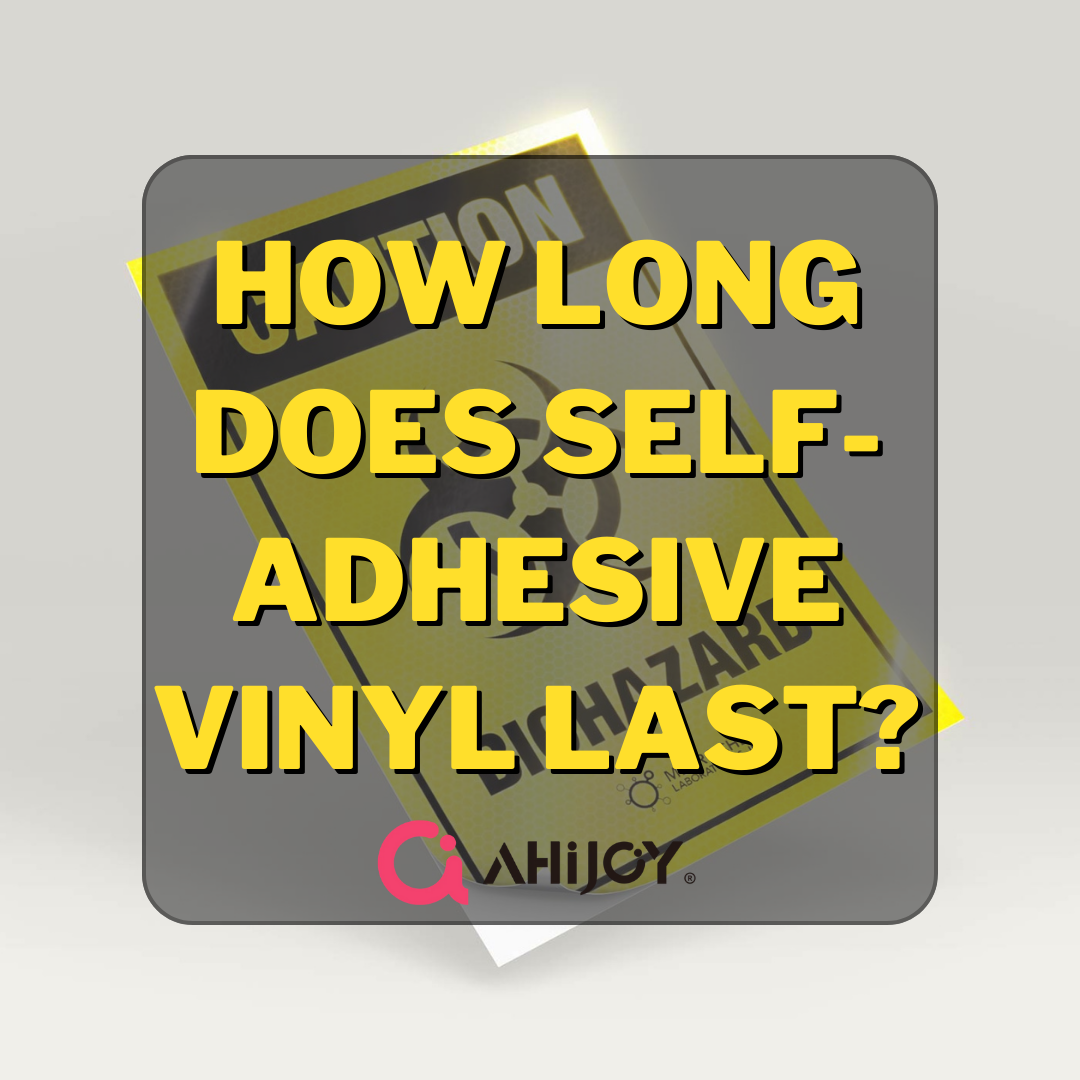posted by Ahijoy on September 24, 2022
How To Use Printed HTV
Heat Transfer Vinyl (HTV) is a vinyl that has been pre-printed with a design. Printed heat transfer vinyl (HTV) is a fun, easy, and affordable way to customize your clothing, accessories, and other fabrics. It is easy to use and will give you the look you want, whether it is a subtle or bold look. The only thing that can be difficult about using printed heat transfer vinyl is cleaning the garment after applying the design.

Printed HTV is a high-temperature vinyl that is suitable for a variety of applications. It's great for making t-shirts and other items. The best way to use printed Heat Transfer Vinyl is with a transfer press. This ensures that the transfer goes on perfectly, without wrinkles or bubbles. Firstly we discuss what is heat transfer vinyl.
Heat Transfer Vinyl
Heat Transfer Vinyl (HTV) is a pressure-sensitive vinyl that allows you to transfer your own artwork designs to any garment. Heat transfer vinyl is a very popular material for decorating clothing, t-shirts, and other items. It’s most commonly used for customizing T-shirts, but it can also be used for all kinds of other projects.
The material can be an excellent option for those who wish to be able to sew on their designs. Heat transfer vinyl is available in various colors and patterns and can be printed on both light and dark backgrounds. The big advantage of HTV over traditional vinyl is that it's more durable and can withstand multiple items of washing without losing its ability to transfer your design onto the garment.
It can also be used to make small designs, but it's not as effective since they don't transfer as quickly, and they may be harder to remove from the backing paper.
Some other benefits include:
No Mess -
You don't require messy glue or adhesive to apply HTV. You just cut the design out of the sheet, iron it on, and then peel off the backing paper when it's cooled down. This makes it easy to use and allows it to deliver results quickly.
Durable -
Heat Transfer Vinyl is durable, so you can wash your clothing as much as possible without worrying about ruining your design! The only thing that will damage it is water, so make sure not to wash with anything too hot (like bleach).
Printed Heat Transfer Vinyl
Printed HTV is the same as regular HTV, but it has been printed with a pattern from a computer. The manufacturer can do this, or you could design the print yourself and have it printed by your local screen printer.
It is a great way to add your design or brand to any item you want to customize. It’s simple and easy to apply, lasts for years, and can be used on almost anything.
The process is simple: first, you need to print your design using a heat press machine, then place the printed design face down on the item you want to decorate and apply heat from the back. This causes the vinyl to melt into the item and adhere permanently. It allows you to create endless custom products for your business or personal use!

Benefits Of Printed Heat Transfer Vinyl:
Durability:
The high-quality ink used in printed heat transfer vinyl provides a vibrant print that will last for years with proper care. Heat transfer vinyl is also very durable, which means it won’t crack or peel like some other types of fabric printing methods.
Easy To Use:
You don't need any special training or equipment when using printed heat transfer vinyl because all you need is an iron and some basic instructions on how to use it correctly. The application process couldn't be easier!
High-Quality Results:
Printed heat transfer vinyl provides high-quality results because it's made from very durable materials that won't easily fade or lose their color over time due to wear and tear from washing or drying them in a machine dryer like regular
Printed HTV: What You Need To Know Before You Start
Printed Heat Transfer Vinyl (HTV) is a great way to customize your t-shirts and other fabric. Printed HTV is very durable, and it is safe to wash after applying the design. To get the best results, we strive to ensure you have a positive experience with your Printed HTV project. The following tips will help you create a beautiful design and avoid common mistakes.
The following information will help you get started with your printed HTV project:
Know Your Design
The design is key when choosing your printed HTV. Some designs may not work as well on certain materials or require more than one layer of material for a good result.
Use The Right Heat Press Machines
First of all, you need to be familiar with the types of heat press machines available because they all work differently. The type of heat press machine you choose depends on your experience and the type of projects you plan to use it for.
For example, if you plan on doing small jobs and only occasional use, then iron will work fine for you. If you plan on doing a lot of large jobs or are planning on making this a career, then we always recommend investing in a more high-end model.
Use Transfer Tape Or Spray Adhesive (If Needed)
Some fabric types require transfer tape or spray adhesive to keep them from shifting during printing. If you’re using transfer tape or spray adhesive, ensure it has been applied correctly before turning on your heat press.
Preheat Your Garment Thoroughly Before Printing
It is important that your garment be completely dry before printing with HTV because moisture can prevent adhesion between layers of fabric during the heating process by causing the lifting of the ink layer from the garment surface (known as “cracking”). This will result in poor print quality or even no print at all.
How To Use Printed HTV
Using printed HTV is a little different than regular Heat Transfer Vinyl (HTV). First, you must print the design onto transfer paper instead of directly onto the fabric. The HTV transfer paper is coated with an adhesive to ensure it sticks to shirts or other garments. This also allows for easy removal of the image, which you may need if it doesn't come out quite right.

Step 1: Prep Your Fabric
Before starting your project, make sure that your fabric is clean and dry. If you are using solid-colored fabric, ensure there are no loose threads, as they can cause problems during printing. Also, if you use a dark-colored T-shirt as the base material, ensure there is no oil residue on the garment. If you are using a dark fabric, make sure that it is not too thin because thin material will not be able to hold the pressure needed to print properly.
Step 2: Preparing Your Cut File
It is important to have the right file format and the correct size of the cut file. This will ensure that your design will be printed correctly when it comes time to make it into a garment. The best way to ensure this is to use your own cut file or prepare one yourself.
Step 3: Getting The Design
Look at the design itself and ensure it's not too detailed or busy. The more intricate the design, the harder it is for heat press machines to produce a crisp image. If you're using a small detail in your design, like letters or fine lines, then make sure that it's at least 1/4 inch from all edges of the garment. This will ensure that there isn't any distortion when your HTV comes out of the press.
Step 4: Peel Back Transfer Tape
Next, you will peel back the transfer tape from the print side of the HTV backing paper. You want to keep the backing paper intact to avoid losing any of your design during application!

Step 5: Cut With The Print Facing Up
You can use a printed HTV Cut with the print facing up. If you're using a heat press, make sure to place the vinyl on top of your t-shirt and then apply pressure.
If you're using an iron, place the vinyl on top of your shirt and then iron it onto it using a press cloth. Make sure not to let the iron touch your t-shirt.
Step 6: Do Not Mirror Your Image
When printing your image, do not mirror the image. You will need to print your design as is and then flip it on the computer. You should not use a program that lets you mirror your design, do not use it. Doing this will make your design look off when printed on the fabric.
Step 7: Weed Your Design
Once you have printed out your weed design onto a sheet of heat transfer vinyl (HTV), cut out each letter individually so they can be ironed onto different clothing parts without having any contact with one another (as stated above).
Step 8: Using A Carrier Sheet
A carrier sheet is an item that is used to help protect your garment from getting damaged during the heat transfer process. Using the carrier sheet as a permanent part of your design. Make sure you use the right side of the carrier sheet if there is one! Cut off any excess material around the edges of the HTV sheet.
Step 9: Press Your Design
To use printed HTV, press your design (like normal). his is done like normal, and you will not need to preheat the iron. Most people use a medium-high setting with a dry cotton cloth between the HTV and their garment. If you have never used HTV before, testing a small piece on something that won't be worn or seen by anyone else first is best!
Tips For Using Printed HTV
Printed heat transfer vinyl is a great way to add custom designs to your t-shirts, hats, and other apparel. It's also easy to apply, as long as you have the right equipment. These tips will help you get the most out of using printed HTV:
- Make sure you use a heat press with a temperature setting of 320 degrees Fahrenheit.
- Clean and dry your materials before you begin.
- Make sure your design is printed out at 100% scale on card stock or other heavy paper, not tissue or vinyl, etc.
- If you are having problems getting the ink to transfer onto the garment, try using a rubber squeegee instead of a cloth one to remove excess water from the garment before applying heat.
- Be sure that your garment is placed underneath the press face up and NOT face down like most people do because this will cause wrinkles in your design!

Why Use A Heat Press For Making T-Shirts?
T-shirts are one of the most popular items to print on a heat press. They are affordable and easy to sell. People love personalized T-shirts, especially when they can put their own names or initials on them.
It has several benefits for you to use a heat press when making your own T-shirts:
A heat press is a device that applies heat and pressure to the design on your t-shirt, essentially burning the ink and fabric together. The result is a permanent print that won't fade, regardless of how much you wash it. Heat presses are definitely the most professional way to make your t-shirt printing look great.
A heat press uses much more pressure than other methods and can transfer ink onto products much faster than other methods. This means that you will be able to get your order done faster, which makes it great for businesses that need to turn around their orders quickly.
The main advantage of using a heat press over another method is that it offers better quality control. Since the process is done with such high pressure, you don't have to worry about mistakes like smudging or bleeding from your design. The ink will always stay where it's supposed to go when using a heat press. Thus, you will have no problems with getting something printed on demand!
Heat presses are relatively easy to use and are relatively inexpensive compared to other options, such as screen printing or vinyl cutting machines. They offer great results when used properly but are also easy enough for beginners to learn how to use them in no time at all!
Frequently Asked Questions
Conclusion
With some care and planning, you can use printed HTV for home decor projects and appliqué without the hassle of weed and feed. Many people use printed HTVs to create unique designs on their own, but they can also be purchased in many colors and styles. And when it comes time to remove the project, you'll be able to peel off each piece easily. Just don't forget to put down an old, tattered sheet to capture all those plastic pieces before they get away!



